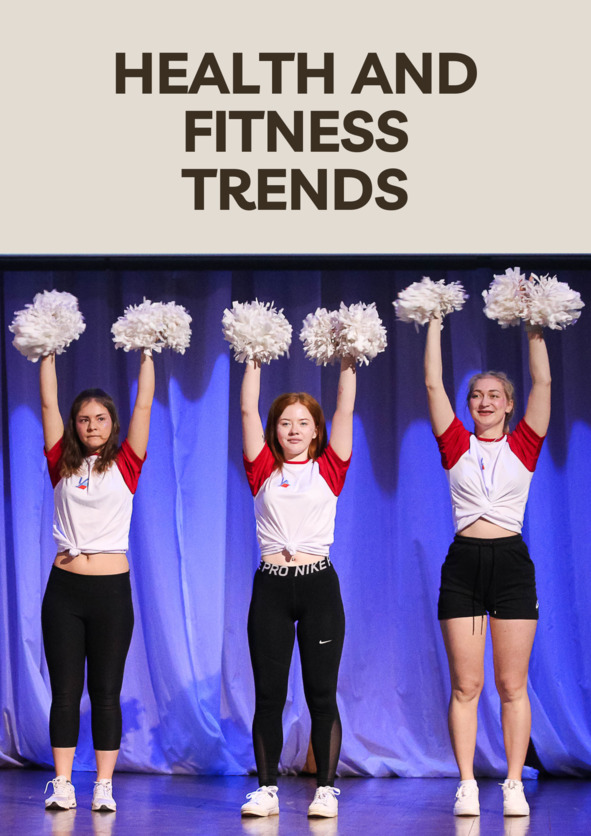
Полная версия
Overview Physical Education Course for International Students. Educational book

Overview Physical Education Course for International Students
Educational book
E. A. Lubyshev
A. A. Krasilnikov
A. S. Lubyshev Photograph
F. Kh. Zakirov Translator
© E. A. Lubyshev, 2024
© A. A. Krasilnikov, 2024
© A. S. Lubyshev, photos, 2024
© F. Kh. Zakirov, translation, 2024
ISBN 978-5-0062-0552-9
Created with Ridero smart publishing system
Dear readers,
On behalf of the collective of authors working at the board of Physical Education and Life Safety Department of Moscow City Pedagogical University, we are pleased to introduce you to our new book, “Overview course of physical culture for foreign students.”
This book is an essential guide for foreign students of various Russian universities, providing a comprehensive overview of Physical culture in social, cross-cultural, and professional aspects, taking into account their unique and individual interests. The book covers a range of topics, including the challenges of “Physical culture” as an academic discipline, the historical foundations of Sport, Olympic and Paralympic movements, and the essentials of a healthy lifestyle and sport.
The book comprises 18 thematical lectures, each of which is designed to provide students with the necessary knowledge and skills in current field. With final tests at the end of each lecture, students can assess their understanding and determine the level of acquired knowledge.
We believe that the attentive studying of this book will not only enhance your knowledge of Physical culture and Sport, but also help you to join the Russian-speaking educational environment with ease. We hope you find this book useful and informative.
Best regards,
The collective of authors.

HEALTHY LIFESTYLE
Lecture 1. Healthy mind, body and spirit
A healthy lifestyle is a way of living that promotes the well-being of an individual in all aspects – mind, body, and spirit. It is a way of life that is aimed at maintaining optimal health and preventing illness. The components of a healthy lifestyle are multifaceted and include a variety of factors.
One of the most important components of a healthy lifestyle is healthy eating. This means consuming food that is high in nutritional value, such as fresh fruits and vegetables, lean protein, and whole grains. It also means avoiding foods that are high in refined carbohydrates, saturated and trans fats, and added sugars. Eating in moderation and being mindful of portion sizes is also essential for maintaining a healthy diet.
In addition to healthy eating, regular exercise is an important part of a healthy lifestyle. Engaging in physical activity has numerous benefits for the body, such as improving cardiovascular health, increasing strength and endurance, and reducing the risk of chronic diseases. Some popular forms of exercise include jogging, cycling, weight lifting, yoga, Pilates, and Tai Chi.
Managing stress efficiently is another crucial component of a healthy lifestyle. High levels of stress can negatively impact mental and physical health, so it is essential to find effective ways to manage stress. Meditation, mindfulness practices, deep breathing exercises, and engaging in activities that bring joy and relaxation can help to reduce stress levels.
Getting adequate sleep, maintaining a positive outlook, and having a balanced life are also important factors in promoting a healthy lifestyle. Sleep is crucial for allowing the body to rest and regenerate, and a positive outlook on life can improve mental health and well-being. Maintaining balance in life means ensuring that all areas of life are given proper attention, including work, personal relationships, hobbies, and self-care.
Living a healthy lifestyle takes discipline and dedication. It is essential to make informed choices and to prioritize one’s health in all aspects of life. By taking care of the mind, body, and spirit, one can achieve optimal health and well-being, leading to a happier and more fulfilling life.
Questions to discuss for Lecture 1
– Are there any cultural or social factors that influence what is considered a healthy lifestyle?
– How can technology and digital tools help in promoting a healthy lifestyle?
– What are the benefits of living a healthy lifestyle?
– What are the challenges of maintaining a healthy lifestyle in today’s society?
– How can we motivate ourselves to make healthy lifestyle choices?
– How does a healthy lifestyle affect mental health and well-being?
– How can we incorporate healthy habits into our busy lives?
– How can we educate and encourage others to adopt a healthy lifestyle?
Write an essay on assigned topics
1. Нealthy lifestyle can involve the components of your physical, mental and spiritual health.
2. Healthy eating, motor activities and stress managing are the critical parts of your healthy lifestyle.
3. You need to get knowledge at the different fields to create your own healthy lifestyle.
Sample essay for lecture 1
When it comes to living a healthy lifestyle, there are several different factors to consider. Defining a healthy lifestyle can vary from person to person, but in general, it can be described as a way of living that promotes overall health and wellbeing. This includes taking care of your physical, mental, and emotional health.
There are many different components that make up a healthy lifestyle. Healthy eating is a critical part of this, which means consuming foods that are nutritious and good for your body. This includes fresh fruits and vegetables, lean proteins, whole grains, and healthy fats. On the other hand, there are certain foods that should be avoided, such as those that are high in saturated fat, added sugars, and processed ingredients.
In addition to healthy eating, regular exercise is also essential for maintaining a healthy lifestyle. Incorporating a variety of physical activities into your daily routine can help improve your overall health, boost your energy levels, and reduce your risk of chronic diseases. Some examples of exercises that are great for maintaining a healthy lifestyle include aerobic exercise, yoga, Pilates, Tai Chi, martial arts, and Qi Gong.
Stress is another factor that can have a significant impact on your overall health and wellbeing. When stress is not managed properly, it can lead to physical and mental health problems, including anxiety, depression, and even addiction. It is important to learn effective stress management techniques, such as deep breathing, meditation, or yoga.
Having a positive outlook on life can also play a significant role in living a healthy lifestyle. This means focusing on the good things in life, practicing gratitude, and maintaining a positive mindset. Having a balanced life that includes sufficient sleep, rest, and leisure activities is also essential for optimal health and wellbeing.
Living a healthy lifestyle involves taking responsibility for your own health and wellbeing. It means making informed choices about your nutrition, exercise routine, stress management, and other health-related behaviors. Ultimately, living a healthy lifestyle requires discipline and commitment, but the benefits are well worth the effort.

HEALTHY EATING
Lecture 2. Eat to live, but not live to eat
Maintaining a healthy diet is essential for overall wellness, and it starts with adopting new eating habits that incorporate fresh fruits, vegetables, and whole grains while reducing foods high in fat, salt, and sugar. By learning basic nutritional principles and incorporating them in a way that suits you, you can feel better, have more energy, and achieve optimal health.
Incorporating balance, variety, and moderation into your eating habits is also crucial. Try to consume food from each food group daily, including vegetables and fruits, grain products, milk and alternatives, and meat and alternatives. Listen to your body, eat when you’re hungry, and stop when you’re full. Be open to trying new foods from each group and avoid overindulging in any one thing. Remember that all foods can be a part of a healthy diet if consumed in moderation, even sweets.
Maintaining a healthy diet will help you maintain the proper balance of nutrients, minerals, and vitamins, and increase your energy levels. Healthy eating can also help you better manage stress and improve your overall well-being. It’s one of the best ways to prevent and manage many health conditions, such as heart disease, high blood pressure, type 2 diabetes, and certain types of cancer.
It’s important to note that healthy eating is not a temporary diet but rather a lifestyle change that you can enjoy for the rest of your life. Diets are temporary and may leave you feeling hungry and preoccupied with food. Once you stop dieting, you may also overeat to compensate for what you missed. Instead, incorporating a healthy, balanced variety of foods into your diet is much more fulfilling, and coupled with physical activity, you’re more likely to achieve and maintain a healthy weight.
Questions to discuss for Lecture 2
– When it comes to healthy eating, what are some initial steps to take?
– Are there any specific foods that you should limit or avoid for a healthier diet?
– What are some key principles to keep in mind for maintaining a healthy diet?
– How can you ensure that you are getting all the necessary nutrients in your diet?
– In your opinion, how effective is healthy eating in preventing certain health issues?
– What distinguishes healthy eating from dieting, and which approach is more sustainable for long-term health?
Write an essay on assigned topics
1. The main micronutrients in healthy food
2. Junk food is the way to disease
3. How to choose food carefully and smart?
Sample essay for lecture 2
Healthy eating is the foundation for a healthy and fulfilling life. It’s not just about what you eat, but also about how you eat. The journey to healthier eating habits starts with learning new ways to eat, such as adding more fresh fruits, vegetables, and whole grains to your diet while cutting back on foods that contain excessive amounts of fat, salt, and sugar.
In order to feel great, have more energy, and stay as healthy as possible, it’s important to learn some nutritional basics and apply them in a way that works best for you. A key part of this process is learning about balance, variety, and moderation. A balanced and healthy diet should include foods from all food groups, such as vegetables and fruits, grain products, milk and alternatives, meat and alternatives, and healthy fats. Listening to your body’s hunger cues and eating until you’re satisfied can also help you maintain a healthy diet.
One important principle of healthy eating is variety. By choosing different foods within each food group, you can ensure that you’re getting all the nutrients your body needs. It’s also important not to have too much or too little of one thing, as all foods can be part of a healthy diet in moderation, even sweets.
A healthy diet can help you get the right balance of vitamins, minerals, and other nutrients that your body needs to function properly. It can also help you feel your best, give you more energy, and help you handle stress better. Furthermore, it is one of the best ways to prevent and control many health problems, including heart disease, high blood pressure, type 2 diabetes, and some types of cancer.
It’s important to note that healthy eating is not the same as being on a diet. Diets are often temporary and can leave you feeling hungry, deprived, and obsessing over food. A healthy and balanced variety of foods, on the other hand, is more satisfying and sustainable in the long term. Pairing a healthy diet with regular physical activity is more likely to help you achieve and maintain a healthy weight than dieting alone.
So, in summary, healthy eating starts with making small changes to your diet and incorporating more fresh, nutrient-rich foods into your meals. A balanced and varied diet, in moderation, can help you stay healthy, prevent health problems, and give you the energy you need to live your best life.

PHYSICAL FITNESS AND ITS BENEFITS
Lecture 3. Motor activities for the better life
Maintaining physical fitness is essential for leading a healthy and active lifestyle. Being physically fit means that you can meet the demands of daily life without feeling excessively tired or out of breath. Physical fitness can be divided into two categories: health-related and skill-related fitness. Health-related fitness comprises of four components: cardiorespiratory endurance, muscular strength and endurance, muscular flexibility, and body composition. The skill-related fitness components include agility, balance, coordination, power, reaction time, and speed, and are vital for sports and athletic performance as well as overall wellness.
Physical activity encompasses any activity that can improve or maintain physical fitness and general health. It can range from everyday activities such as walking or cycling to work or school, doing household chores, or gardening, to more vigorous activities like dancing, sports, and fitness training at the gym. Regular physical activity provides numerous health benefits and can help reduce the risk of developing chronic diseases such as heart disease, stroke, and diabetes.
Aerobic activities are any activity that increases the heart and breathing rate. For significant health benefits, it is recommended to do at least 30 minutes of moderate-intensity physical activity most days of the week. This time can be accumulated in small increments, and the intensity should be enough to raise the heart rate and make you slightly sweaty. Examples of moderate-intensity physical activities include brisk walking, jogging, cycling, swimming, dancing, tennis, and badminton.
Muscle-strengthening activities are essential for building and maintaining muscle strength and flexibility. Adults should aim to do a minimum of two sessions of muscle-strengthening activities per week, not on consecutive days. These activities can include carrying heavy shopping, gardening, pilates, yoga, or weight training exercises. A session should comprise a minimum of 8—10 exercises using the major muscle groups, and each exercise should be repeated 8—12 times with a weight that makes the muscle group tired before the completion of the set.
Physical activity can not only improve physical health but also has positive effects on mental health and wellbeing. Regular physical activity can help reduce stress, improve self-esteem, and increase energy levels. Physical activity also provides an opportunity to socialize and interact with others.
In summary, maintaining physical fitness through regular physical activity is vital for overall health and wellbeing. Health-related fitness and skill-related fitness can both be improved through regular physical activity, including aerobic and muscle-strengthening activities.
Questions to discuss for Lecture 3
– What are the two classifications of physical fitness and what do they encompass?
– What are the four main components of health-related fitness and how do they contribute to overall fitness?
– What are the six components of skill-related fitness and why are they important?
– How would you define physical activity and what are some examples?
– Can you list some examples of activities that fall under the category of physical activity?
– What is the recommended amount of daily aerobic activity for adults and how can it be achieved?
– What are some examples of aerobic activities that can be included in a daily exercise routine?
– What are muscle-strengthening activities and why are they important?
– How many exercises should a muscle-strengthening session include and what should be the level of resistance?
– What are some of the physical and mental benefits of engaging in regular physical activity?
Write an essay on assigned topics
1. Motor activities can keep your muscles and physical abilities in a good conditions.
2. Average session at the gym should include:
3. Physical activities can save your heart.
Sample essay for lecture 3
Physical fitness can be classified into two categories: health-related fitness and skill-related fitness. Health-related fitness focuses on the body’s ability to perform everyday activities and is composed of four main components: cardiorespiratory endurance, muscular strength and endurance, muscular flexibility, and body composition. These four components work together to contribute to overall fitness by improving the body’s ability to perform daily activities safely and effectively, without being overly fatigued.
In addition to health-related fitness, skill-related fitness is also an essential component of physical fitness. Skill-related fitness is made up of six components: agility, balance, coordination, power, reaction time, and speed. These components are essential for success in sports and athletics and contribute to overall wellness.
Physical activity is any bodily movement that requires energy expenditure. It can include activities such as walking, cycling, swimming, dancing, gardening, and playing sports. Physical activity is an essential component of a healthy lifestyle and can help individuals maintain or improve their physical fitness and overall health.
To gain health benefits, it is recommended that adults engage in at least 30 minutes of moderate-intensity physical activity on most days of the week. This can be achieved through activities such as brisk walking, jogging, cycling, swimming, or playing sports. It is also recommended that adults engage in muscle-strengthening activities, such as weight training or resistance exercises, at least two times per week.
Muscle-strengthening activities are crucial for maintaining and improving muscle strength, flexibility, and balance. A muscle-strengthening session should include a minimum of 8—10 exercises that target the major muscle groups, such as the arms, legs, back, and abdomen. The level of resistance should be such that an individual can perform 8—12 repetitions of each exercise before the muscle group becomes tired.
Engaging in regular physical activity has numerous physical and mental benefits. Physical benefits include improved cardiovascular health, increased muscle strength and endurance, improved body composition, and improved bone health. Mental benefits include reduced stress and anxiety, improved mood, and increased self-esteem.

HEALTH AND FITNESS TRENDS
Lecture 4. The modes of workouts for students
Physical fitness is not only important for physical health, but it also offers several other benefits. For instance, it can enhance social connections and provide a chance to discover new interests. It can also boost one’s mood, confidence, and self-esteem. In this context, exercise is an excellent way to promote physical fitness, health, and wellness.
Weight training is a unique form of exercise that stands out from other types of workouts. It requires the use of weights or resistance to work the muscles, and this resistance increases the muscles’ strength and endurance. Weight training can be performed with various types of equipment, such as free weights, barbells, and weight machines. Weight training is not only for athletes; it is beneficial for people of all ages and abilities.
Yoga is another form of exercise that offers both physical and mental benefits. It combines physical postures, breathing techniques, and meditation to promote relaxation and reduce stress. There are several different styles of yoga, each with a unique focus and intensity. Hatha yoga is one of the most popular styles and is perfect for those who want to reduce stress, improve flexibility and strength. However, individuals can choose any style that aligns with their needs and preferences.
Pilates is a method of exercise that focuses on low-impact movements that improve muscular strength and endurance. It is named after its founder, Joseph Pilates, who designed a series of exercises that engage the abdominals, lower back, hips, and thighs. Pilates is beneficial for improving core stability, posture, balance, flexibility, and the prevention of back pain.
In conclusion, weight training, yoga, and pilates are all great ways to achieve physical fitness and overall health. Each of these forms of exercise offers its unique benefits and can cater to various individual needs and preferences. It is crucial to choose a workout that is enjoyable and sustainable, which makes it easier to stick to and reap the maximum benefits.
Questions to discuss for lecture 4
– What are some of the benefits of getting fitter, aside from physical health?
– How is weight training different from other types of exercise?
– How can weight training contribute to overall fitness and wellness?
– What are the different types of sports equipment that can be used for weight training?
– How does yoga promote both physical and mental well-being?
– Are there different styles of yoga, and if so, what are they?
– What are the main components of hatha yoga, and how do they benefit the body and mind?
– Who developed the pilates method, and when?
– Which parts of the body are targeted in a typical pilates workout?
– What are some of the specific exercises included in a pilates routine?
Write an essay on assigned topics
1. Close benefits of workout.
2. To train or not to train. The smart chois.
3. Workouts in the core of healthy lifestyle.
Sample essay for lecture 4
In addition to physical health, getting fitter can bring a multitude of benefits to your life. For example, it can boost your mood and mental wellbeing, increase your energy levels, improve your sleep quality, enhance your self-esteem, and provide a sense of accomplishment and personal satisfaction.
Weight training differs from other types of exercise in that it focuses on building strength and muscle mass through resistance training with weights or machines. Other types of exercise, such as cardio or aerobics, focus more on increasing endurance and burning calories.
Weight training can contribute to overall fitness and wellness by improving muscle tone, increasing bone density, reducing the risk of injury, improving posture, and boosting metabolism. It can also lead to improved performance in other physical activities and daily tasks.
There are a variety of sports equipment that can be used for weight training, including barbells, dumbbells, kettlebells, weight machines, resistance bands, and bodyweight exercises.
Yoga promotes physical well-being by increasing flexibility, strength, and balance. It also has mental health benefits, such as reducing stress and anxiety, improving focus and concentration, and promoting mindfulness and relaxation.
Yes, there are many different styles of yoga. Some of the most common ones include Hatha, Vinyasa, Ashtanga, Bikram, and Kundalini. Each style has its own unique set of poses, sequences, and breathing techniques.



